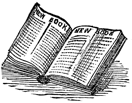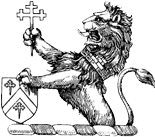As the Tables Turn
Remember those days when a week wouldn’t go by without some American bishop publicly criticizing Pope John Paul II for being too rigid, too hardline, too reactionary? Think Raymond Hunthausen, Thomas Gumbleton, Rembert Weakland, Matthew Clark, Howard Hubbard. These outspoken prelates aside, the U.S. episcopacy of the 1980s and 1990s was, generally speaking, characterized by gently left-of-center bishops who took a softer, feel-good approach to Catholic orthodoxy than did the Vatican during the John Paul pontificate. Many of these prelates were groomed by ecclesial kingpins like Cardinals Joseph Bernardin and Roger Mahony.
Since the death of Cardinal Bernardin in 1996, the U.S. episcopacy has slowly but steadily taken a turn toward a more conservative-style orthodoxy, especially during the pontificate of Benedict XVI. With few exceptions, the older, permissive, liberal bishops, whose most obvious contributions were to water down the faith, were replaced by those whose leanings were decidedly more orthodox and traditional. Some prime examples come from California: José Gomez replaced Mahony as archbishop of Los Angeles, George Niederauer and later Salvatore Cordileone replaced John Quinn as archbishop of San Francisco, and Cordileone and later Michael Barber succeeded John Cummins as bishop of Oakland.
Gomez and Cordileone are arguably two of the most theologically (or pastorally, if you wilbpconservative bishops heading American dioceses these days. (For good measure, add in Bishop Robert Vasa of Santa Rosa, formerly vicar general for Bishop Fabian Bruskewitz in Lincoln, Nebraska, and an outspoken critic of Nancy Pelosi.) Mahony, Quinn, and Cummins remain icons of the liberal American Church of days bygone.
The tables have turned. Could they be turning back?
You May Also Enjoy
In this special section, which runs as an occasional feature, we present samples of the offerings in the Narthex, the NOR’s online blog.
Today, transgenderism is firmly established in the cultural landscape. Who will cut through the cant, expose the cultural masquerade, and proclaim the truth? Our religious leaders?
Pope Francis is entitled to his opinions, and he’s not shy about sharing them in front of microphones. But his opinions don’t equate to magisterial pronunciations.

